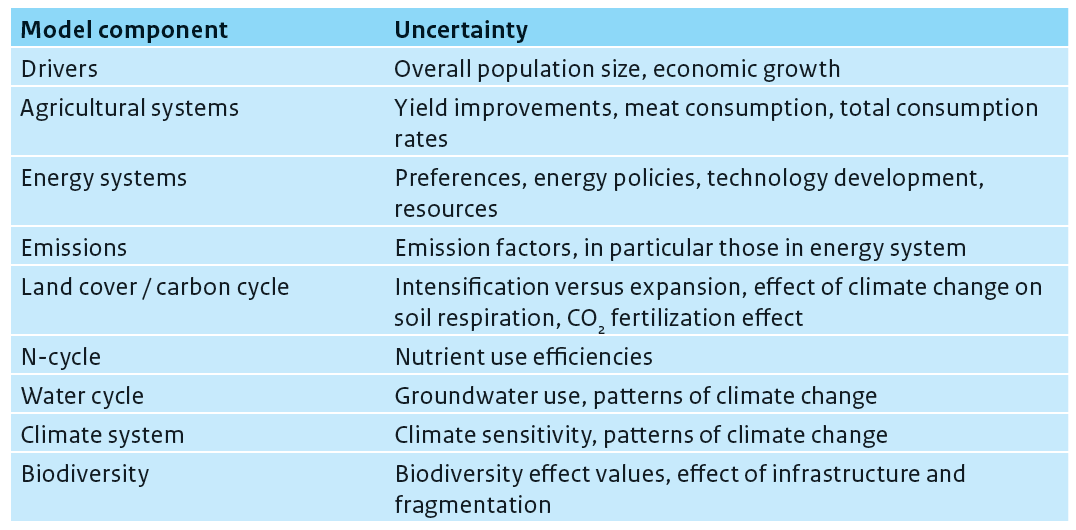Model concept, solver and details - IMAGE
| Corresponding documentation | |
|---|---|
| Previous versions | |
| Model information | |
| Model link | |
| Institution | PBL Netherlands Environmental Assessment Agency (PBL), Netherlands, https://www.pbl.nl/en. |
| Solution concept | Partial equilibrium (price elastic demand) |
| Solution method | Simulation |
| Anticipation | Simulation modelling framework, without foresight. However, a simplified version of the energy/climate part of the model (called FAIR) can be run prior to running the framework to obtain data for climate policy simulations. |
The IMAGE framework can best be described as an integrated assessment simulation model, that describes the relevant economic and environmental processes with a considerable amount of physical detail. IMAGE has been set-up as an integrated assessment framework in a modular structure, with some components linked directly to the model code of IMAGE, and others connected through soft links (the models run independently with data exchange via data files). This architecture provides more flexibility to develop components separately and to perform sensitivity analyses, recognising that feedback may not always be strong enough to warrant full integration. For example, the various components of the Earth system are fully linked on a daily or annual basis. However, components of the Human system, such as the TIMER energy model and the agro-economic model MAGNET, are linked via a soft link, and can also be run independently.
The IMAGE core model comprises most parts of the Human system and the Earth system, including the energy system, land-use, and the plant growth, carbon and water cycle model LPJmL. The IMAGE framework includes soft-linked models, such as the agro-economic model MAGNET, and PBL policy and impact models, such as FAIR (climate policy), GLOBIO (biodiversity), GLOFRIS (flood risks) and GISMO (human development).
Systematic uncertainty analyses have been performed on the individual IMAGE models. In addition, IMAGE has been assessed in model comparison projects (e.g., Energy Modelling Forum, AMPERE, LIMITS and AgMIP via MAGNET; Von Lampe et al. (2014)). These studies also contribute to understanding key uncertainties, as the experiments in these projects tend to be set up in the form of sensitivity runs, in which comparison with other models provides useful insights. An overview of key uncertainties in the IMAGE framework is presented in the table below.
Table 1.1: Overview of key uncertainties in IMAGE 3.0 (from IMAGE 3.0 documentation)
A brief overview is presented here, for more information see theIMAGE 3.0 web page.
